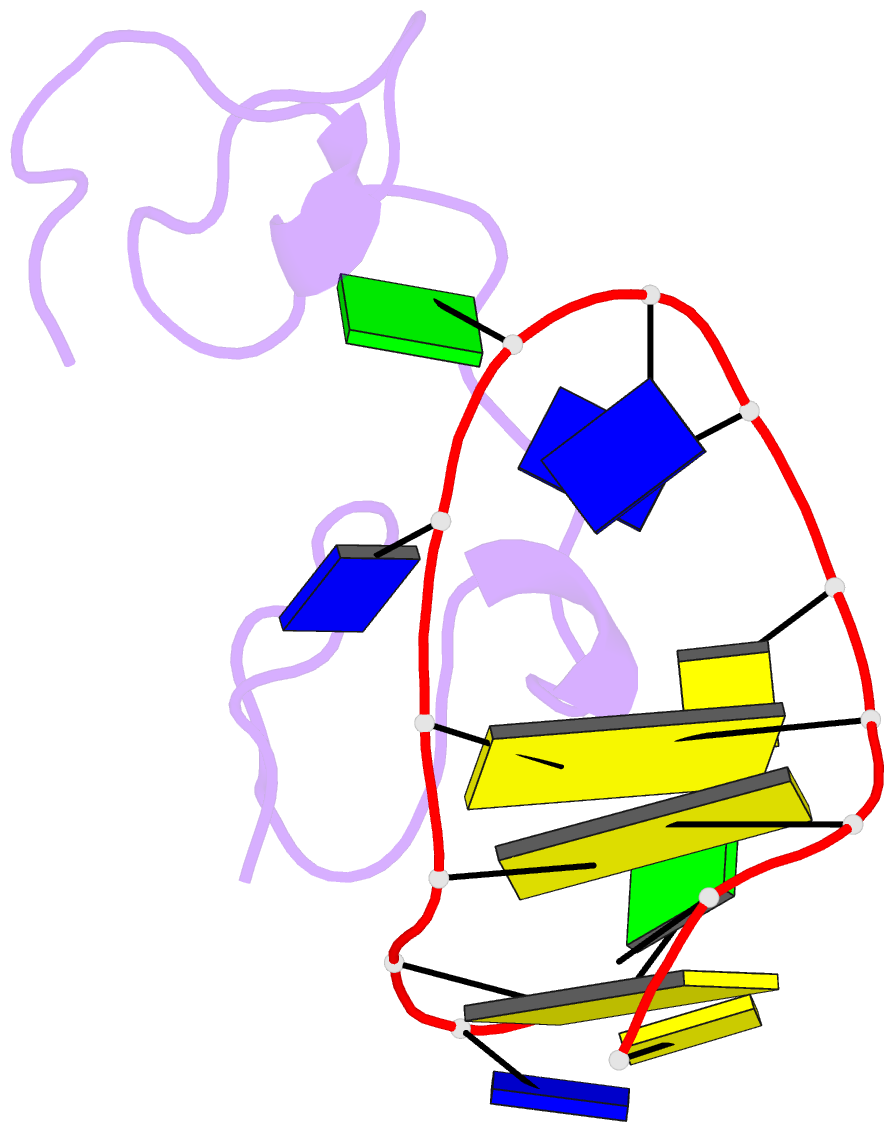Summary information and primary citation
- PDB-id
- 2exf; SNAP-derived features in text and JSON formats;
DNAproDB
- Class
- viral protein-DNA
- Method
- NMR
- Summary
- Solution structure of the hiv-1 nucleocapsid (ncp7(12-55)) complexed with the DNA (-) primer binding site
- Reference
- Bourbigot S, Ramalanjaona N, Boudier C, Salgado GF, Roques BP, Mely Y, Bouaziz S, Morellet N (2008): "How the HIV-1 nucleocapsid protein binds and destabilises the (-)primer binding site during reverse transcription." J.Mol.Biol., 383, 1112-1128. doi: 10.1016/j.jmb.2008.08.046.
- Abstract
- The human immunodeficiency virus type 1 nucleocapsid protein (NCp7) plays an important role in the second strand transfer during reverse transcription. It promotes annealing of the 18-nucleotide complementary DNA primer-binding site (PBS) sequences at the 3' ends of (-)DNA and (+)DNA. NMR studies show that NCp7(12-55) and NCp7(1-55) interact at the 5' end of the loop of DeltaP(-)PBS, a (-)PBS derivative without the 3' protruding sequence, in a slow-exchange equilibrium. This interaction is mediated through the binding of the hydrophobic plateau (Val13, Phe16, Thr24, Ala25, Trp37, and Met46) on the zinc finger domain of both peptides to the 5-CTG-7 sequence of DeltaP(-)PBS. The stacking of the Trp37 aromatic ring with the G7 residue likely constitutes the determinant factor of the interaction. Although NCp7(12-55) does not melt the DeltaP(-)PBS stem-loop structure, it opens the loop and weakens the C5.G11 base pair next to the loop. Moreover, NCp7(12-55) was also found to bind but with lower affinity to the 10-CGG-12 sequence in an intermediate-exchange equilibrium on the NMR time scale. The loop modifications may favour a kissing interaction with the complementary (+)PBS loop. Moreover, the weakening of the upper base pair of the stem likely promotes the melting of the stem that is required to convert the kissing complex into the final (+/-)PBS extended duplex.





